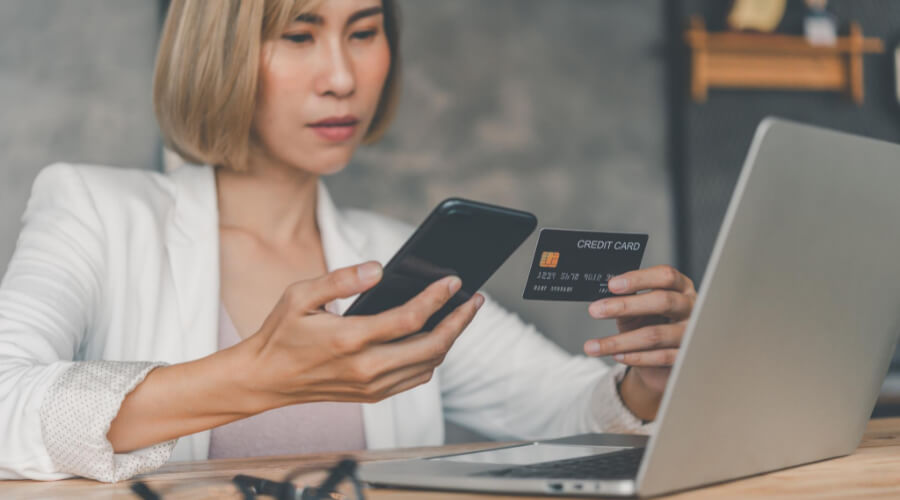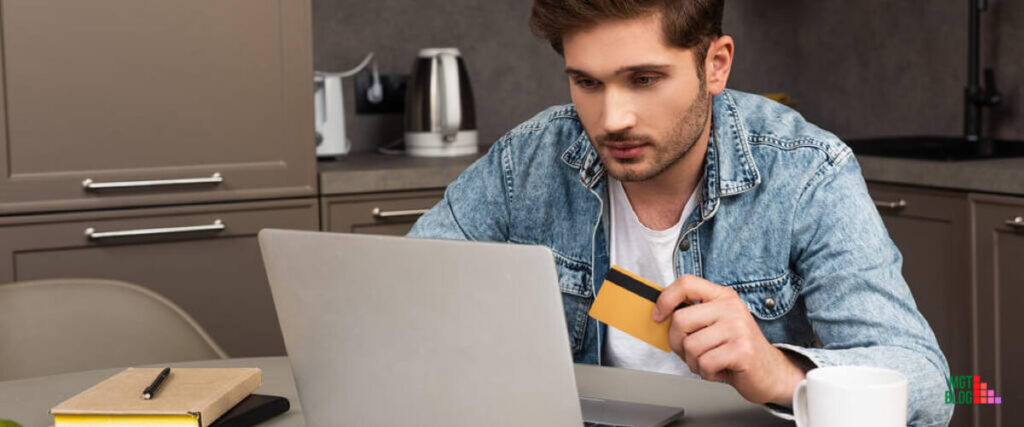If someone uses your credit card online, you can track them through your bank. The bank’s fraud department has sophisticated systems that detect fraud which is reported to law enforcement officers. Depending on the extent of the fraud, the police might follow up with the merchant to get the details of the fraudster, who will then be prosecuted based on the laws.
Key Takeaways
- Enabling SMS alerts and email notifications will help you easily detect any theft on your credit card
- If you become a victim of credit card fraud then bank will close your old card, give you a new card and some occasions might refund you the money
- If you submit a dispute regarding a credit card transaction then the bank authority will investigate the dispute according to the guidelines from the card networks
- If the IP Address doesn’t match with the buyer’s and card holder’s IP address then the bank will consider that transaction as a fraud one
Credit Card Fraud Investigation Process

When you dispute a credit card online transaction, your card issuer will examine the incident and make a fair judgment regarding the liability. The bank will then investigate the dispute guided by the comprehensive guidelines from the card networks.
Here is the tracking process for suspicious credit card online transactions.
Step 1: Report The Suspicious Transaction To Your Card Issuer
If you notice someone has used your credit card online, first report it to your card issuer. Let them know you did not authorize the transaction.
Step 2: Bank Gathers Evidence
Once the bank receives a complaint on a fraud-related case, they will use their sophisticated system to collect the information on a fraudulent transaction. The bank can use evidence such as:
1. IP Address: The bank will seek to know whether the buyer’s ID matches the cardholder’s. If it doesn’t, the transaction could be fraudulent.
2. Geological Data: Here, the bank examines where the buyer placed the order. If it matches the cardholder’s location at the time, the bank might dismiss the complaint.
3. Transaction Timestamps: Given the cardholder’s location, the bank would seek to check whether the time is questionable based on the cardholder’s transactions patterns.
4. Behavioral Indicators: The bank would seek to know whether the goods purchased are similar to those usually bought by cardholders. If it seems unusual, the transaction may be deemed fraudulent.
5. 3-D Secure: The deployment of 3-D secure systems such as MasterCard SecureCode and Verified by Visa give the cardholder a chance to verify the transaction before it goes through. The bank would want to know whether you had subscribed to such and if the same was used during the transaction.
6. Account Activity: The bank will check whether there is only one fraudulent transaction or a batch. If there is a batch of fraudulent transactions, the bank may forward the case to law enforcement officers for further investigations.
Step 3: Bank Examines The Transaction
After gathering the evidence, the bank will review the transaction to check whether it is reasonable enough to warrant further investigation.
Step 4: Bank Decide On The Way Forward
If the bank suspects the negligence was on your side, they may reject the inquiry. On the other hand, if they conclude that the fraud is legitimate, they will advise you to contact the credit bureaus to have your account frozen. This way, they would protect your account against further fraud, which can negatively affect your credit ratings.
Regarding the transaction, your card issuer may either:
1. Conclude the merchant was partially responsible for the fraudulent transaction and therefore filed chargeback to have the money refunded to your account. During the process, the cardholder, the merchant, and the bank do not access the disputed money. It can take more than three months to have the funds finally deposited into your account.
2. Reimburse you the money and bear the loss. This is especially if the amount involved is small, and filing a chargeback could cost more. Note that you are also liable to a tune of $50, and the bank can decide to share the losses with you.
Step 5: Case Reported To Law Enforcement Officers
For online transactions, it can be hard to blame the merchant entirely. The bank may decide to forward the case to the police for further investigation. The police will get the information on the location, IP address, and transaction time, among other details to pin the suspect. The fraudster will then be prosecuted accordingly.
How To Avoid Online Credit Card Fraud

Though credit card fraudsters can be tracked and prosecuted, police rarely do that as the time and cost involved in the investigation process can be huge. Again the merchant might not bore the liability as it is difficult to pinpoint their involvement in online fraud. The best thing is, therefore, to take necessary precautions to avoid falling victim.
Here are the 10 precautions that help minimize chances of online credit card fraud:
1. Run Virus Scan And System Check On Your Computer
Viruses and spyware can easily intrude on your computer and get hold of your credit card information. As such, computer hackers can use the details frequently to do online transactions. However, you can protect your computer by installing antivirus software.
2. Transact Only Through Websites With Security Certificates
Secured sites encrypt your banking information to prevent any unauthorized access. Always check for a padlock icon in the site’s address bar to ensure you are accessing and feeding information through authentic and protected sites.
3. Opt For Fingerprint Sign In When Accessing Mobile Banking Services
Accessing mobile banking through fingerprint sign-in is more secure than passcodes. It would be difficult for an unauthorized person to access online banking with your information if fingerprint enabled.
4. Use 3-D Secure Systems
3-D secure systems such as MasterCard SecureCode and Verified by Visa give you another layer of protection when doing credit card online transactions. It generates additional passwords sent to your phone whenever you want to transact online, thus, minimizing fraud.
5. Lock Your Card Whenever You Misplace It
As a precaution, always lock your card temporarily whenever you cannot trace it. Most issuers lock the card for two weeks, and if you cannot find it, report it as stolen to get a replacement. Otherwise, it will be unlocked after the period lapses.
6. Be Well Informed About Scams
Keep up to date with email scams to avoid fraud. Some suspicious emails can request you to download an attachment, click links, or update your banking information to fetch you information to transact online. Whenever in doubt, call your card issuer before opening such emails.
7. Check Your Monthly Statements And Report Any Unauthorized Credit Card Transactions
Review your credit statements every month and keep an eye even on minimum deposits and withdrawals. No matter the amount involved, report any unauthorized transactions to your card issuer.
8. Protect Your Credit Card Pin And Never Share It With Anyone
To protect your pin, do not use or disguise your PIN from part of or whole of the following combinations:
1. Date of birth
2. Consecutive numbers e.g. 5,6,7,8
3. License numbers
4. Social security numbers
5. Car registration numbers
6. Personal telephone numbers
7. Family members’ names
8. You name
Also, do not share your pin with anyone else, and avoid using common codes such as phone unlock code as your pin.
9. Keep Your Card Safe And Use It Safely
Be aware of the card skimmers who fit small electronic devices at the ATAM machine to steal your card information. Inspect the AMT before using it and cover your pin when keying it. Also, keep an eye on pickpocketers whenever you are in a busy place, as they can steal and use your card information to transact online.
10. Protect Your Identity Against Theft
Someone else can use your information to defraud you. Keep your mail secure by getting a personal PO Box or locking a mailbox with a padlock and key. Also, destroy any materials that contain your personal information before throwing them in a trash bin.
Final Word
With the use of technology, fraudulent online credit card transactions are increasing at an alarming rate. Luckily, you can track the fraudster through your bank. The bank uses its system to follow up the transaction and weigh if it is worth forwarding to law enforcement officers. Often, the police do not investigate the issue as sometimes the money involved is less than the investigation cost.
The best thing is to be on the look to avoid falling victim. For instance, use antivirus systems and transact only through secure sites. Never share your pin with relatives, and do not disguise your credit card pin using common codes or special calendar days.
References:
1. https://www.experian.com/blogs/ask-experian/credit-education/preventing-fraud/credit-card-fraud-what-to-do-if-you-are-a-victim/
2. https://askleo.com/recourse-someone-used-credit-card-online/
Last Updated on October 7, 2022 by Magalie D.

Magalie D. is a Diploma holder in Public Administration & Management from McGill University of Canada. She shares management tips here in MGTBlog when she has nothing to do and gets some free time after working in a multinational company at Toronto.





